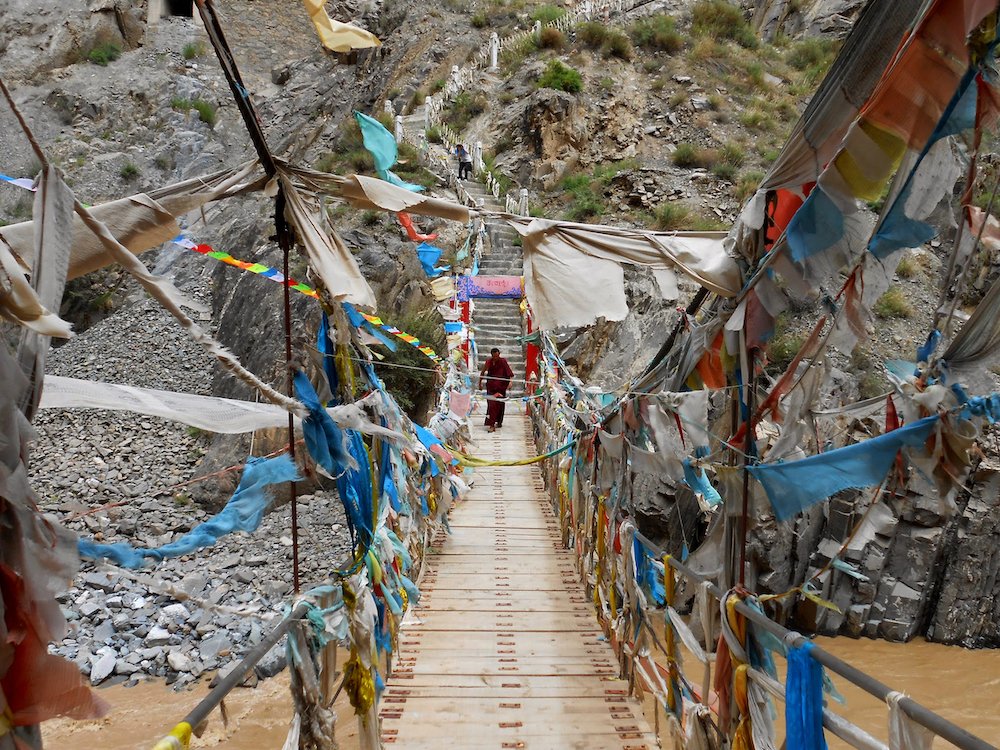New Amdo Tibet Prints
After living in China for some years, a bucket list travel destination began to develop in my mind: Tibet. I was already in China, which eliminated half the work of getting inside the mystical Land of Snows, a place walled off from the rest of the world by a fortress of natural geography and paranoid bureaucracy.
Problem is, even after obtaining your Tibet Travel Permit, you still cannot travel freely as a foreigner in the Tibet Autonomous Region. You must have a guide with you at all times, which means you can only really visit as part of a package tour.
Tours aren’t really my bag, but I’m not militantly against them, except when the goal of the tour is to keep an eye on me.
An alternative presented itself in my and pretty much every other Westerner’s complete ignorance of what Tibet is. When we think of Tibet, it’s usually the neatly drawn borders of the Tibet Autonomous Region (TAR). In reality, the historical and cultural Tibet is tied to the geography of the Tibetan Plateau - an area nearly twice as big as the TAR. Tibet as Tibetans know it spills into several different Chinese provinces, including Qinghai, Sichuan, Gansu, and Yunnan. And there you have it - multiple alternatives to the TAR for a genuine Tibetan experience.
Welcome to Amdo.
Tibetans recognize three main cultural areas of Tibet: Ü-Tsang, Kham, and Amdo (see map). After doing a shitload of research Amdo seemed to be the best fit with its combination of cultural heritage (lots of monasteries and nomadic life) and natural beauty. The 14th Dalai Lama’s birthplace is actually in Amdo and not the TAR, which I found surprising. Although, I later found out from the locals that any foreigners trying to visit it would be immediately turned away. I decided not to take my chances but later confirmed this to be true.
After all, the whole point of this trip was to see a piece of Tibet freely and not end up in the clink for pushing it too far. Amdo presents another challenge, however. It’s huge. Qinghai province is slightly larger than Texas. The most interesting cultural and natural sites are spread far, far apart. So what did I do in the end? Yeah…a tour. It was the best option to see as much of the area as we could, but it was only two of us, and we had a relatively large amount of freedom on top of the main sites on our itinerary.
From Xining, the provincial capital of Qinghai, we rode southeast to Rebkong - a majority Tibetan town famed for its elaborate thangka paintings. From there, we embarked on one of the longest, most uncomfortable, and most beautiful car journeys of our lives to Mount Amnye Machen, where we would attempt to do a kora circumambulation trek around the mountain. We would not have made it as far as we did at those lung-burning elevations without our guide, accompanying monk, the Golog horsemen, and their yaks.
I felt the need to do their part of the world and their story justice with a series of prints inspired by the incredible landscape and Amdo’s cultural heritage. As you can see below, I didn’t lack inspiration.
Tibet is a land where natural beauty and symbolism intertwine.
Tibetans have a powerful relationship with their natural surroundings. They have to in order to get by in such an unforgiving landscape. This ancient respect for the natural world is reflected in their artwork. The common motif of elemental colors is everywhere, from prayer flags to thangkas. I knew that any project I did to show my respect for this region and its people had to include them. These 5 colors - blue (sky/space), white (wind/air), red (fire), green (water), and yellow (earth) - are present in the prayer flag prints and work great as backgrounds for the other designs that shine a spotlight on other cultural symbols like the stupa, endless knot, Tibetan script, and yaks.
Carry on walking slowly.
If I took one thing away from my Amdo experience, it was some simple words of encouragement from the monk that joined us for the Amnye Machen trek: ga le ga ler song. It roughly translates to “carry on walking slowly” - something we needed to hear as we struggled to keep pace at nearly 16,000 feet. I’ve kept these words in my head years later for when the going gets tough, and just general motivation to keep traveling, exploring, and finding my path. Learn more about the beautiful region of Amdo Tibet in the full project write-up! ◉
Written by Seth Barham













